Diversity Species

What are the impacts of global warming on ecosystems and species diversity ?
Global warming, primarily caused by human activities, significantly impacts ecosystems and species diversity. These effects include habitat loss, altered species interactions, the spread of invasive species, disease proliferation, ocean acidification, melting permafrost, changes in fire regimes, water stress, sea level rise, coral bleaching, increased extinction risk, shifting ranges, population declines, adaptation challenges, loss of genetic diversity, behavioral changes, phenological shifts, reproductive challenges, physiological stress, and disrupted mutualisms. Addressing these issues requires immediate action to reduce greenhouse gas emissions and adapt to the changing climate.

What is the significance of genetic diversity within biodiversity ?
Genetic diversity is a vital component of biodiversity, playing a crucial role in ecosystem health and stability. It enables species to adapt to environmental changes, resist diseases, contribute to ecosystem functioning, support food security, and provide medicinal plants. However, threats such as habitat loss, overexploitation, climate change, introduced species, and pollution pose significant risks to genetic diversity. Conservation efforts must prioritize the protection and restoration of genetic diversity to ensure the long-term survival of species and ecosystems.

What are the impacts of climate change on tree species diversity in forests ?
Climate change significantly impacts tree species diversity in forests through altered growth and reproduction patterns, range shifts, disturbance regimes, direct physiological effects, and changes in ecosystem services. These impacts not only affect the health and structure of forests but also have broader ecological and societal implications.

How do invasive species affect biodiversity ?
Invasive species can have a significant impact on native biodiversity, both positively and negatively. They can outcompete and replace native species, leading to changes in community structure and ecosystem function. Invasive species can also cause damage to infrastructure and human health through the spread of disease or destruction of habitats. Management strategies for invasive species include prevention measures such as quarantines and biosecurity protocols, as well as control measures such as eradication programs and habitat restoration. It is important to consider the costs and benefits of each strategy when developing a management plan.
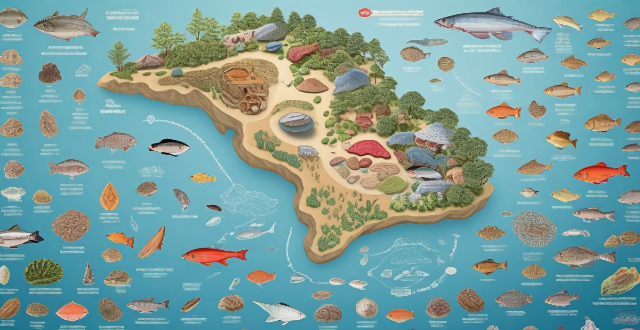
How does climate change affect biodiversity ?
This article explores how climate change affects biodiversity by altering ecosystems, species distribution, and genetic diversity. It discusses the impact of rising temperatures on habitat loss and altered precipitation patterns, ocean acidification on coral reefs and phytoplankton communities, and extreme weather events on fires and storms. The article also highlights the loss of genetic diversity due to reduced resilience and functional homogeneity in ecosystems, as well as inbreeding depression and genetic bottlenecks in species. Addressing climate change is essential for conserving biodiversity and maintaining healthy ecosystems.

What is the relationship between climate change and loss of habitat for endangered species ?
Climate change is causing significant changes in ecosystems around the world, leading to the loss of habitat for endangered species. Rising temperatures, changing precipitation patterns, sea level rise, and extreme weather events are all factors that contribute to this loss. Endangered species are particularly vulnerable to these changes due to their small populations and limited ranges. Examples of endangered species affected by climate change include polar bears, giant pandas, leatherback turtles, and amphibians. It is essential that we take action to protect these species and their habitats, including reducing greenhouse gas emissions, conserving natural habitats, and developing adaptation strategies.

How should we prioritize the protection of endangered species and ecosystems ?
The protection of endangered species and ecosystems is a critical issue that requires immediate attention. Here are some strategies we can employ to prioritize their protection: 1. Conduct comprehensive surveys and studies to identify and understand the current state of endangered species and ecosystems. 2. Develop effective legislation and policies, such as establishing protected areas, regulating hunting and fishing, and promoting sustainable development. 3. Raise public awareness and involvement through education programs, community involvement, and media campaigns. 4. Collaborate internationally by signing international agreements, sharing knowledge and resources, and coordinating conservation efforts. By taking these steps, we can work towards ensuring the survival of our planet's diverse flora and fauna for future generations.
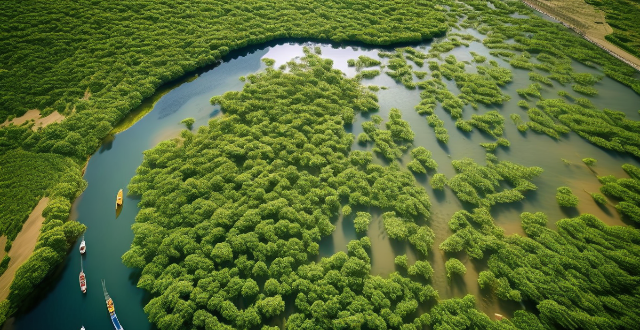
How does biodiversity affect ecosystem services ?
Biodiversity plays a vital role in ecosystem services, including provisioning (like food and water), regulating (climate and flood control), cultural (recreational and spiritual enrichment), and supporting services (soil formation and nutrient cycling). Diverse plant species ensure resilience against pests and diseases, reducing the need for chemical interventions. Wetlands with varied vegetation types can more effectively filter pollutants from water than those with limited plant diversity. Different plant species play roles in carbon sequestration through photosynthesis, leading to more efficient carbon uptake and storage. Biodiversity can help regulate diseases by reducing the likelihood of pathogen spread. Diverse environments like coral reefs or tropical rainforests offer richer experiences for activities such as diving, hiking, and birdwatching. A variety of organisms, including bacteria, fungi, and earthworms, contribute to soil formation and maintenance, which is essential for plant growth. Different species have specialized roles in the cycling of nutrients. High biodiversity means functions can be performed by multiple species, providing a safety net if one species fails. Conservation efforts aimed at protecting and restoring biodiversity are vital for the sustained health of our planet's ecosystems.
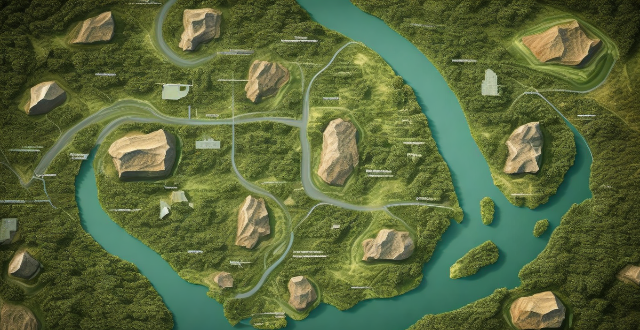
Can climate change cause extinction of certain species ?
Climate change has the potential to cause the extinction of certain species through a variety of mechanisms including rising temperatures, changes in precipitation patterns, loss of habitat, and disruption of food webs. It is essential that we take action to mitigate the effects of climate change and protect vulnerable species before it's too late.

What is the relationship between biodiversity and ecosystem services ?
The text discusses the relationship between biodiversity and ecosystem services, emphasizing that biodiversity is crucial for maintaining the health and functionality of ecosystems. It highlights that diverse species contribute to ecological processes, and many ecosystem services rely on specific species or groups. High biodiversity can lead to more resilient ecosystems, while its loss can diminish these services. The text suggests that conservation efforts can enhance both biodiversity and ecosystem services, underlining the importance of recognizing and protecting this relationship for human well-being.

What is the impact of climate change on biodiversity and conservation law ?
Climate change is a significant threat to biodiversity, affecting species distribution, abundance, and behavior. This has implications for conservation law, which aims to protect and manage biodiversity. The impact of climate change on biodiversity includes habitat loss and fragmentation, altered ecosystem functioning, and increased risk of species extinction. Conservation law must evolve to address these challenges, incorporating resilience measures into conservation strategies and fostering collaboration across sectors. By taking a proactive approach, we can help ensure that future generations continue to benefit from the diverse array of species and ecosystems that make up our planet's natural heritage.

How do ecological protection areas contribute to biodiversity conservation ?
Ecological protection areas contribute significantly to the conservation of biodiversity by preserving habitats, protecting endangered species, maintaining genetic diversity, mitigating climate change, and promoting education and awareness. These areas are crucial for the long-term survival of ecosystems and the diverse range of species that depend on them.
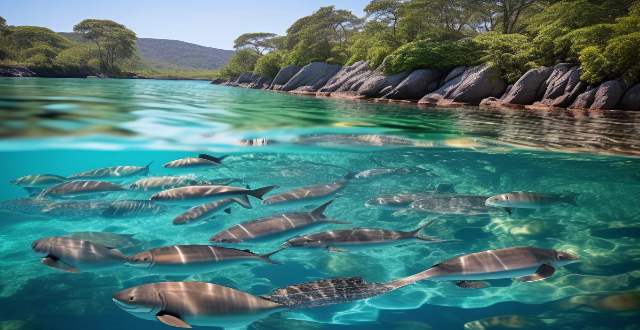
How might climate change influence the distribution and abundance of aquatic species ?
Climate change significantly impacts the distribution and abundance of aquatic species by altering water temperature, pH levels, salinity, and oxygen availability. These changes affect habitats and life cycles of aquatic organisms, causing direct and indirect effects on their survival, growth, reproduction, and community interactions. Some species show resilience through genetic adaptation or phenotypic plasticity. Proactive conservation efforts are crucial for maintaining biodiversity and ecosystem health amid climate shifts.
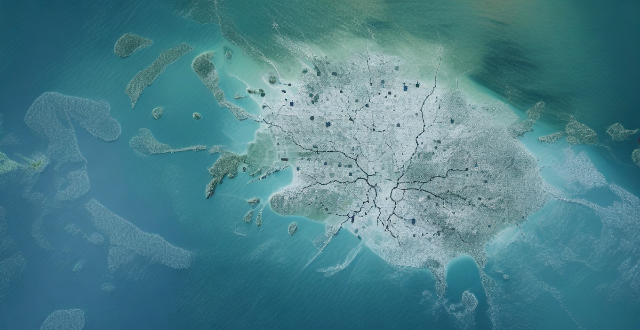
How is global warming impacting biodiversity and endangered species ?
Global warming is impacting biodiversity and endangered species through habitat loss, changes in weather patterns, and increased disease outbreaks. Habitat loss occurs as species are forced to migrate due to rising temperatures, leading to competition for resources and loss of habitats. Changes in weather patterns cause extreme events like droughts, floods, and storms, disrupting ecosystems and potentially leading to species extinction. Additionally, global warming contributes to the spread of diseases among wildlife populations, posing a threat to endangered species. It is crucial to take action to mitigate the effects of global warming and protect vulnerable populations.

How do invasive species interact with climate change to threaten native biodiversity ?
Invasive species and climate change pose significant threats to native biodiversity by exacerbating range expansion, altering competition, increasing predation pressure, degrading habitats, facilitating disease transmission, disrupting mutualisms, having synergistic effects, depleting resources, displacing keystone species, and reducing ecosystem resilience. Integrated management strategies are crucial for mitigating these threats and include habitat restoration, invasive species control, protection of keystone species, and conservation of diverse genetic pools within native species to enhance their adaptability.

What role does diversity play in multicultural education ?
The text discusses the role of diversity in multicultural education, highlighting its benefits such as enhancing cultural awareness, promoting tolerance and acceptance, encouraging open-mindedness and critical thinking, and providing opportunities for personal growth and development. The author emphasizes that embracing diversity in education can contribute to creating a more inclusive and harmonious society.

How can teacher training address cultural diversity in the classroom ?
In today's globalized world, cultural diversity is an increasingly important aspect of modern classrooms. Teacher training can play a crucial role in addressing this diversity by incorporating it into curriculum design, adapting teaching methods, providing professional development opportunities, and implementing fair assessment practices. By doing so, teachers can create inclusive classrooms where all students feel valued and supported, promoting equity and enhancing learning outcomes.

What are the main threats to global biodiversity ?
The article discusses the main threats to global biodiversity, which include habitat loss and fragmentation due to urbanization, agricultural expansion, and mining and extraction; climate change with rising temperatures, altered precipitation patterns, and extreme weather events; pollution from chemicals, noise, and light; overexploitation through overfishing, hunting and poaching, and harvesting of plants; invasive alien species competing for resources, transmitting diseases, and altering habitats; and human population growth leading to increased consumption, waste production, and conflict with wildlife. These threats are interconnected and require coordinated efforts from various stakeholders to implement sustainable practices and protect our planet's diversity of life.

How does cultural diversity affect communication within a workplace ?
Cultural diversity has a profound impact on workplace communication, presenting both challenges and benefits. Challenges include misunderstandings due to language barriers and differences in non-verbal cues, variations in communication styles, and differing norms and expectations. Benefits encompass enhanced creativity, improved problem-solving, and greater empathy. Strategies for promoting effective communication involve education and training, clear messaging, open dialogue, and celebrating diversity. By addressing challenges and leveraging benefits, organizations can build cohesive teams that thrive on their collective differences.

What role do protected areas play in maintaining biodiversity ?
The article discusses the importance of protected areas in maintaining biodiversity, highlighting their roles in habitat preservation, species protection, and ecosystem services. It also addresses the challenges of effective management, connectivity, and global cooperation for conservation efforts. The text emphasizes that protected areas are essential for safeguarding endangered species, supporting ecological processes, and mitigating climate change, but their success depends on balanced management, sufficient resources, and international collaboration.
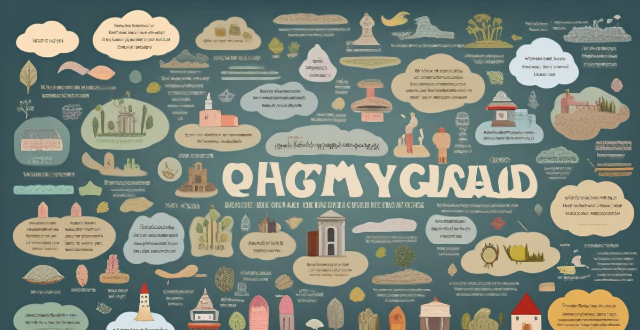
What role does media play in shaping our perception of cultural diversity ?
This article explores the significant role of media in shaping our perception of cultural diversity. It highlights how media exposure to different cultures, representation of cultural diversity, and influence on attitudes and beliefs contribute to understanding and appreciation of cultural diversity. The article encourages critical thinking and active seeking out of diverse perspectives to promote a more inclusive society.

How does social inclusion relate to diversity and multiculturalism ?
The article discusses the relationship between social inclusion, diversity, and multiculturalism. It defines each concept and explains their importance in promoting equality, participation, and belonging. The article also highlights the benefits of diversity and multiculturalism, such as enhanced creativity and understanding among different cultural groups. The intersectionality of these concepts is explored, along with examples of inclusive policies and practices. Education is emphasized as a crucial tool for promoting social inclusion, diversity, and multiculturalism. Overall, the article concludes that these interconnected concepts are essential for building a more equitable and harmonious society.

What are the consequences of climate change for wildlife and ecosystems ?
Climate change has significant consequences for wildlife and ecosystems, including habitat loss, changes in species distribution, impacts on biodiversity, altered ecological processes, invasive species spread, pest outbreaks, and human health risks. It is crucial to take action to mitigate these impacts by reducing greenhouse gas emissions and implementing conservation measures.

How has globalization impacted cultural diversity around the world ?
Globalization has significantly impacted cultural diversity, leadingGlobalization has significantly impacted cultural diversity, leading adaptation but also potential homogen Policy and governance play a role in cultural preservation, with local resistance movements countering globalization effects. Striking a balance between global benefits and cultural preservation is crucial for maintaining diversity.

In what ways do immigration policies affect the cultural diversity of a country ?
Immigration policies play a significant role in shaping the cultural diversity of a country. Policies that promote multiculturalism, facilitate family reunification, and provide opportunities for legal migration can enhance cultural diversity. In contrast, strict immigration controls, deportation policies, and anti-immigrant sentiments can hinder it.

What policies and international agreements aim to protect biodiversity ?
The text provides an overview of various policies and international agreements that aim to protect biodiversity, including the Convention on Biological Diversity (CBD), the United Nations Framework Convention on Climate Change (UNFCCC), the Ramsar Convention, the International Union for Conservation of Nature (IUCN), the World Wildlife Fund (WWF), the Nagoya Protocol, the Global Environment Facility (GEF), national policies and legislation, and the Great Ape Project. These initiatives are crucial for maintaining ecosystem health and human well-being, but face challenges in implementation and enforcement.

How can we celebrate cultural diversity through festivals and events ?
Celebrating cultural diversity is a beautiful way to foster understanding, respect, and appreciation for different cultures. Festivals and events are perfect platforms for this celebration as they bring people together in a festive atmosphere that encourages sharing and learning about diverse traditions. Here's how we can celebrate cultural diversity through festivals and events: Inclusivity in Planning and Participation: To ensure that cultural diversity is celebrated genuinely, it's essential to involve members from various cultural backgrounds in the planning and execution of festivals and events. This approach ensures that traditions are represented authentically and respectfully. Showcasing Cultural Arts and Performances: Artistic expressions like music, dance, theater, and visual arts are integral to many cultures. Featuring these during festivals allows attendees to experience the depth and beauty of different cultural art forms. Food Festivals and Culinary Experiences: Food is a universal language that transcends borders. Organizing food festivals or culinary workshops that highlight dishes from various cultures can be a delightful way to celebrate diversity. Educational Workshops and Discussion Panels: Providing opportunities for learning and dialogue enhances the understanding of different cultures. Workshops and panel discussions can cover topics like history, traditions, and contemporary issues affecting various cultural groups. Community Interaction and Networking: Festivals and events should encourage interaction among participants to build connections and foster a sense of community. These interactions can lead to lasting friendships and mutual respect among diverse groups. Respectful Representation: When celebrating cultural diversity, it's crucial to ensure that representations are respectful and avoid stereotyping or caricatures. Research and collaborate with cultural representatives to ensure accuracy and sensitivity in all aspects of the event.
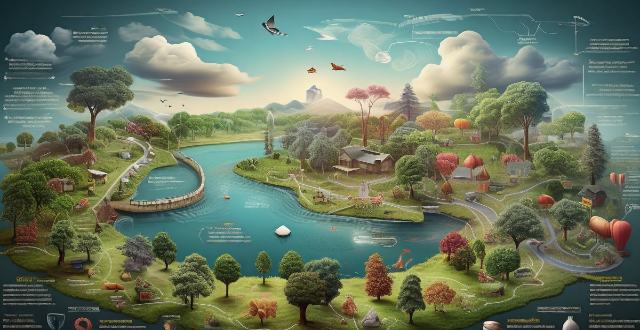
How do climate disasters impact ecosystems and biodiversity ?
The article discusses how climate disasters like hurricanes, floods, droughts, and wildfires have significant impacts on ecosystems and biodiversity. It explains how these events can cause immediate damage to habitats, disrupt food chains, and lead to the extinction of species. The article also provides examples of how climate disasters have affected different ecosystems and species in various parts of the world. Additionally, it highlights the importance of adaptation and resilience in some species that are able to cope with changing environmental conditions. Overall, the article emphasizes the need for action to mitigate the effects of climate change and protect our planet's diverse ecosystems and biodiversity.

What policies and international agreements aim to address the dual crises of climate change and biodiversity loss ?
The text discusses various policies and international agreements aimed at addressing climate change and biodiversity loss. These include the Paris Agreement, Convention on Biological Diversity (CBD), Aichi Biodiversity Targets, United Nations Sustainable Development Goals (SDGs), Ramsar Convention on Wetlands, and International Union for Conservation of Nature (IUCN) Red List of Threatened Species. The text emphasizes the interconnectedness of these issues and the need for collaborative efforts to achieve a sustainable future.